SAMTALET
("Samtalet" is Swedish for "conversation".)
With our starting point in questions about human collectives, the traces of time and fragility of life, we make our work. We, four artists and craftists, engage here in a material conversation. The artist group SAMTALET started as a forum for a kind of non-verbal conversation, where creating with our hands instead becomes the means for reflection and communication.

What is a piece? When is it yours and when is it mine? When is it so much ours, that the traces of individual expression melt into a common statement?
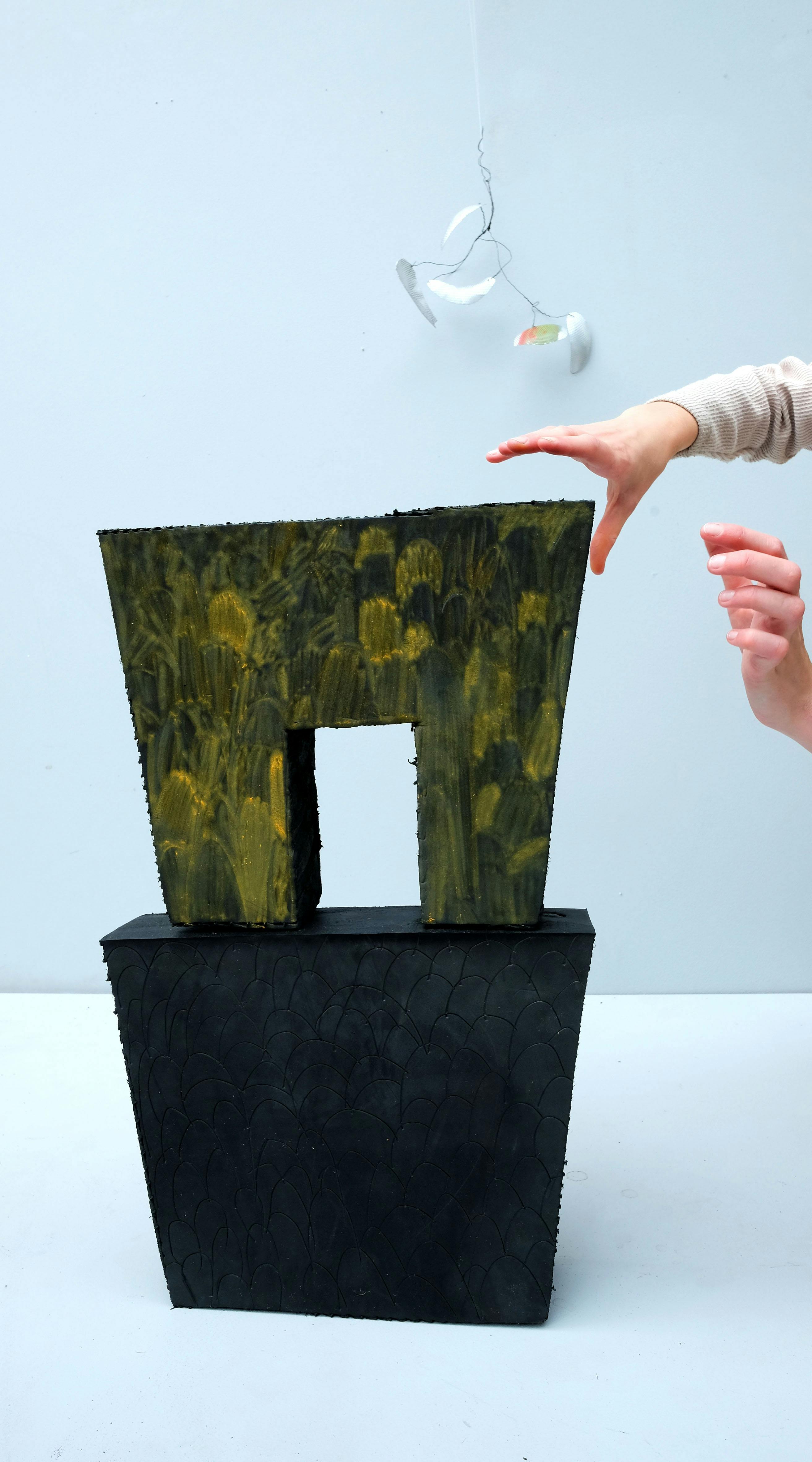

We spent four days together for this project. We ate together, slept together, had breaks together and worked together. Work and play drifted into each other. The project SAMTALET hung over us, ahead of us, trickled into our pores and common silences. At the same time we shared private and personal conversations;
"what are your plans for the autumn?"
"how is that course going for you?"
"what makes you scared?"

We went up at four one morning, me and Maja, to catch the sunlight before it would be to sharp and bright. I was still sleepy, stiff and grumpily silent, but it passed when we got outside and into the beautiful morning. The dew had already lifted, the air was fresh and crisp. We walked the few hundred meters down to the field, Maja carrying her planks, me with all the camera equipment. Carefully she stepped into the field, making sure to tread lightly on the crops until she had reached the tractor tracks. Meanwhile, I adjusted the white balance, set up the tripod and switched lenses. Our intention was to give the planks a ritual. We'd celebrate their life and their journey.
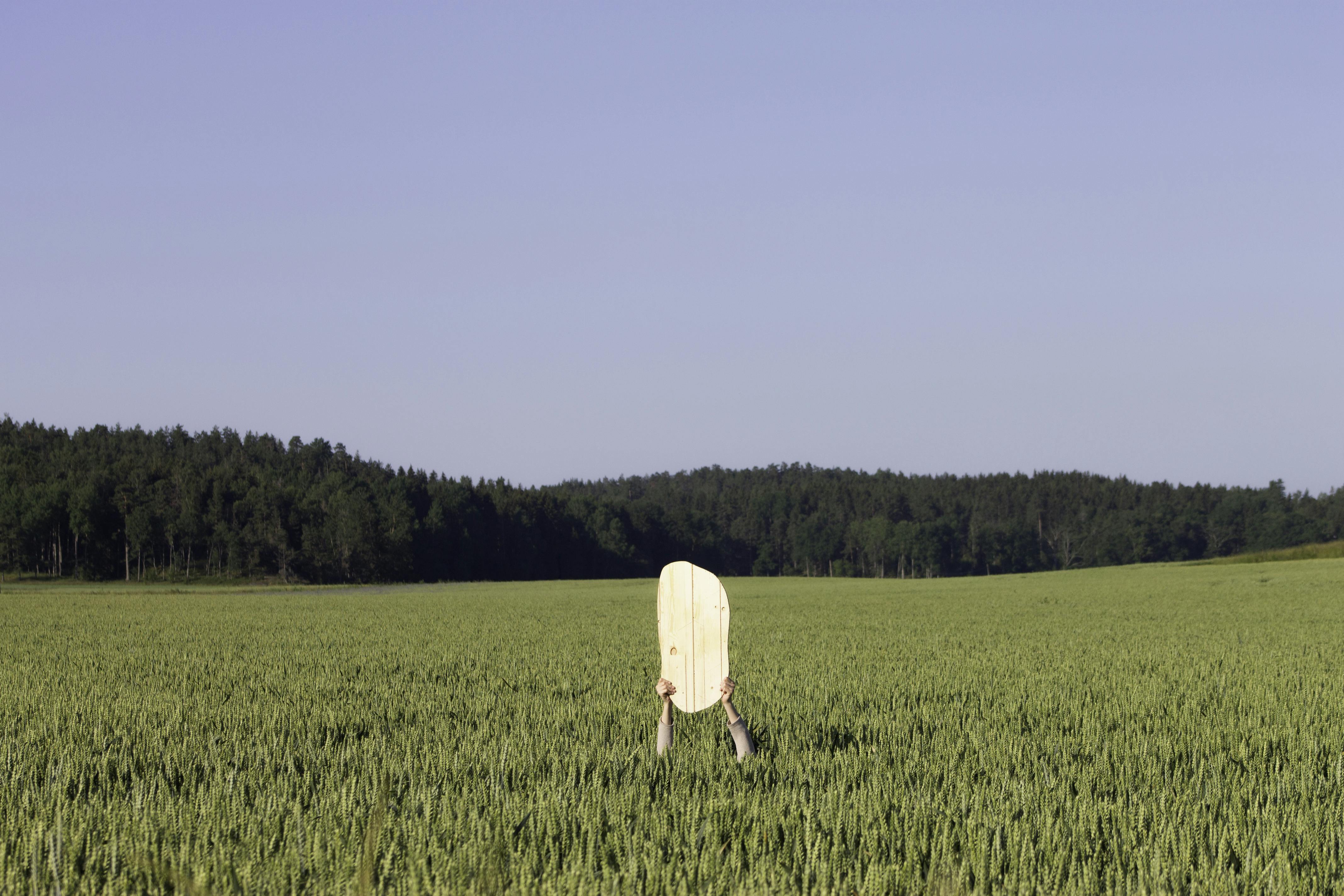
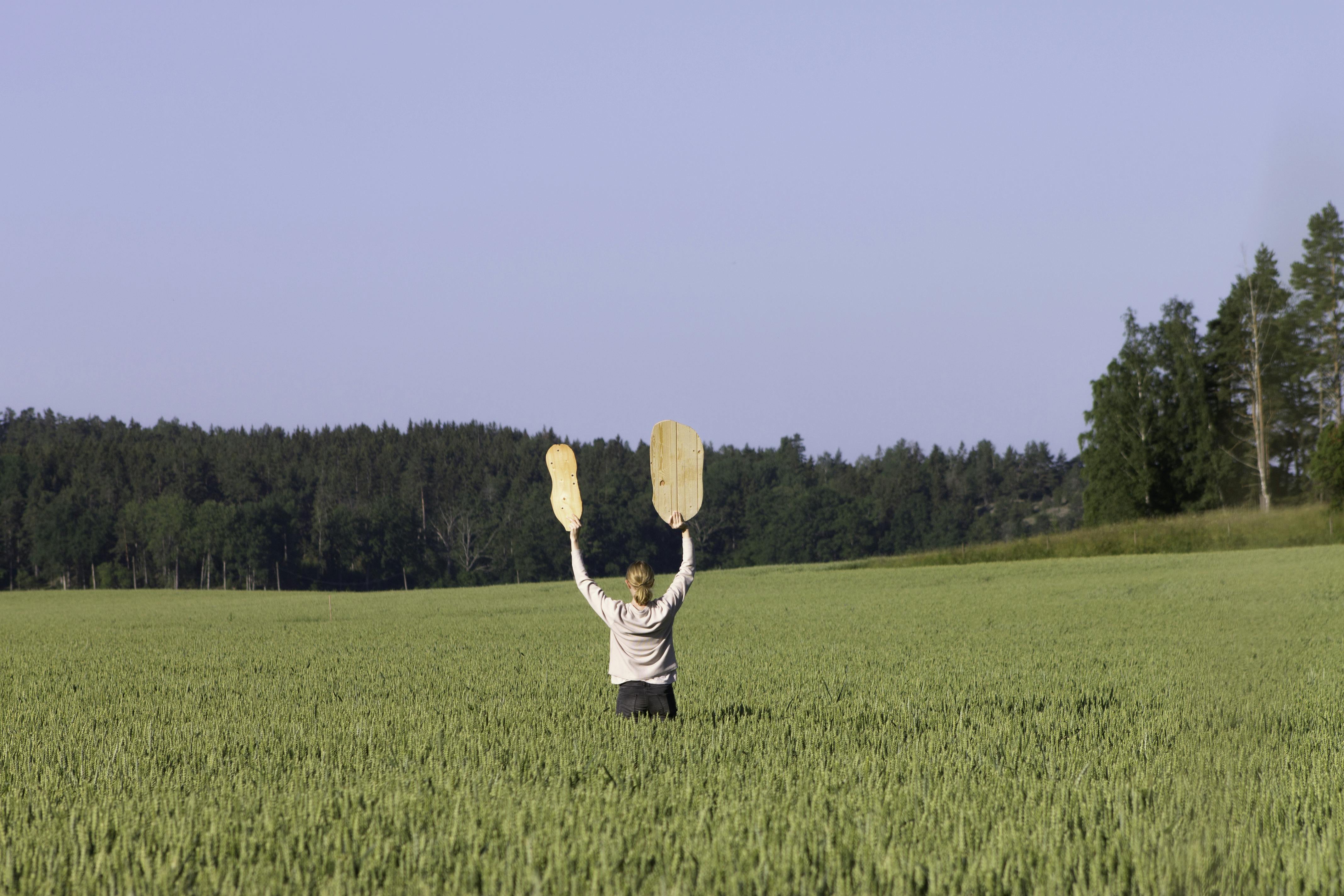
We worked through the days with the sun burning our necks, sweat dripping in the hot summer. How do we relate to each other?
Slowly, slowly, we dared coming closer, giving up our visions, placing materials in each others hands, saying "this is yours now." We gave up control. Tensions became visible and we faced them. Worked through the discomfort between ourselves just as we worked through our materials, until we were content. A shape and a structure and a placement and as story - it all comes together.





The objects came to life, more and more for each day. Frameworks and rules fell away and we gave in to the quick, playful and intuitive way to work. When is something a finished piece? We found interest in each others' traces, each others' visions. We treated ourselves, added to the pieces, with courage. We got eager, greedy and drunk on creative flow. Everything is interesting! Everything comes to life! When I stop and take the time to look, it's beautiful. I see you. I see what you mean. The objects were no longer material outside of our bodies but solid references, something we kept on repeating and something that we shared, like inside jokes and anecdotes. They were part of us, our memories, our conversation.




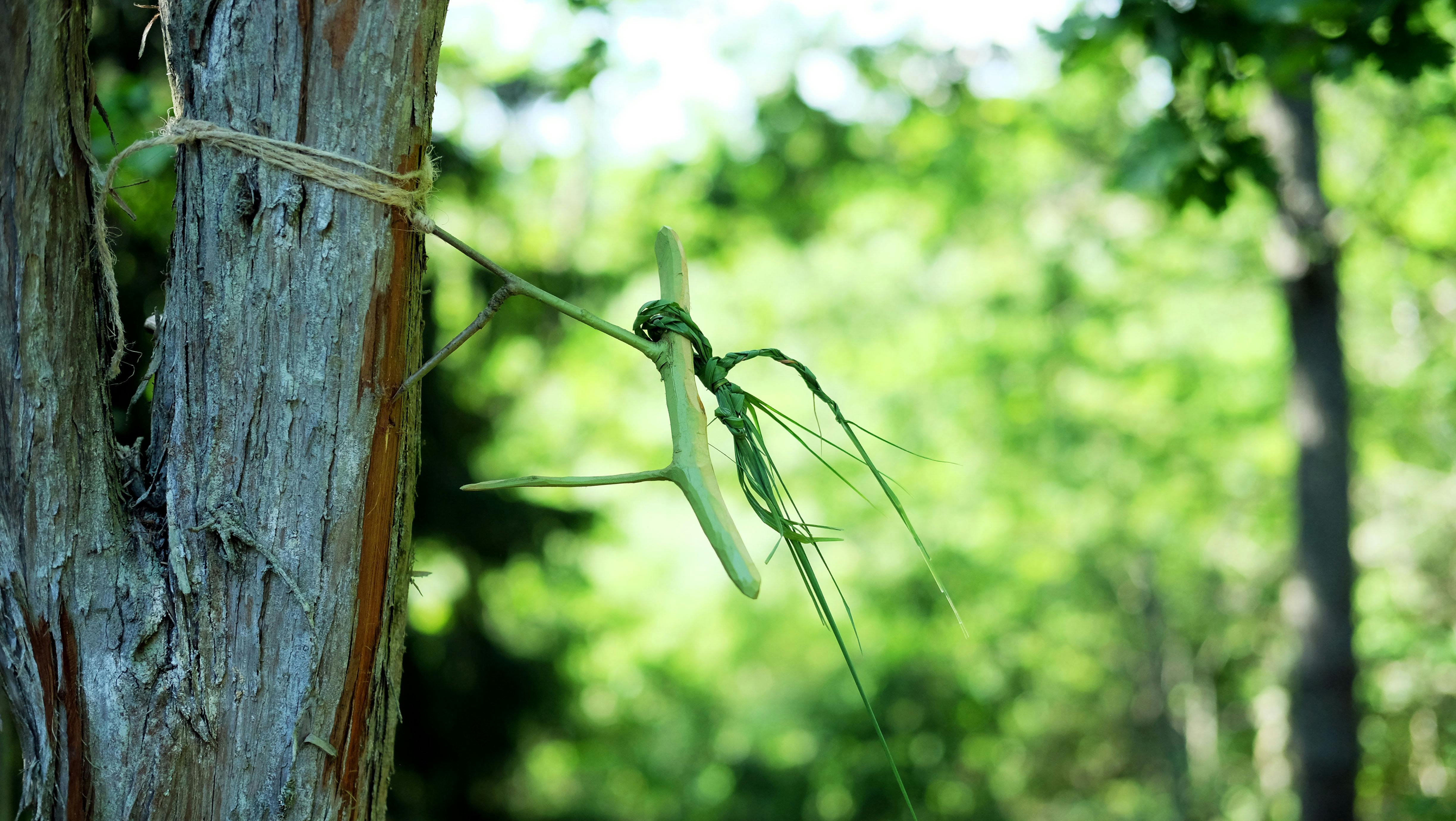
So what remains?
We are artists. We're experts when it comes to taking on the intuitive and unspoken and bring it out into the light, frame and exhibit it. We're experts on straightening out chosen question marks, but also on mediating the non-verbal and keeping the feeling, sharing it. During SAMTALET, we've done both; framed and stated, but also left some things unexplained. We've let the materials speak for themselves and not hurried with the explanations. We've created a composition, but left the question hanging in the air.
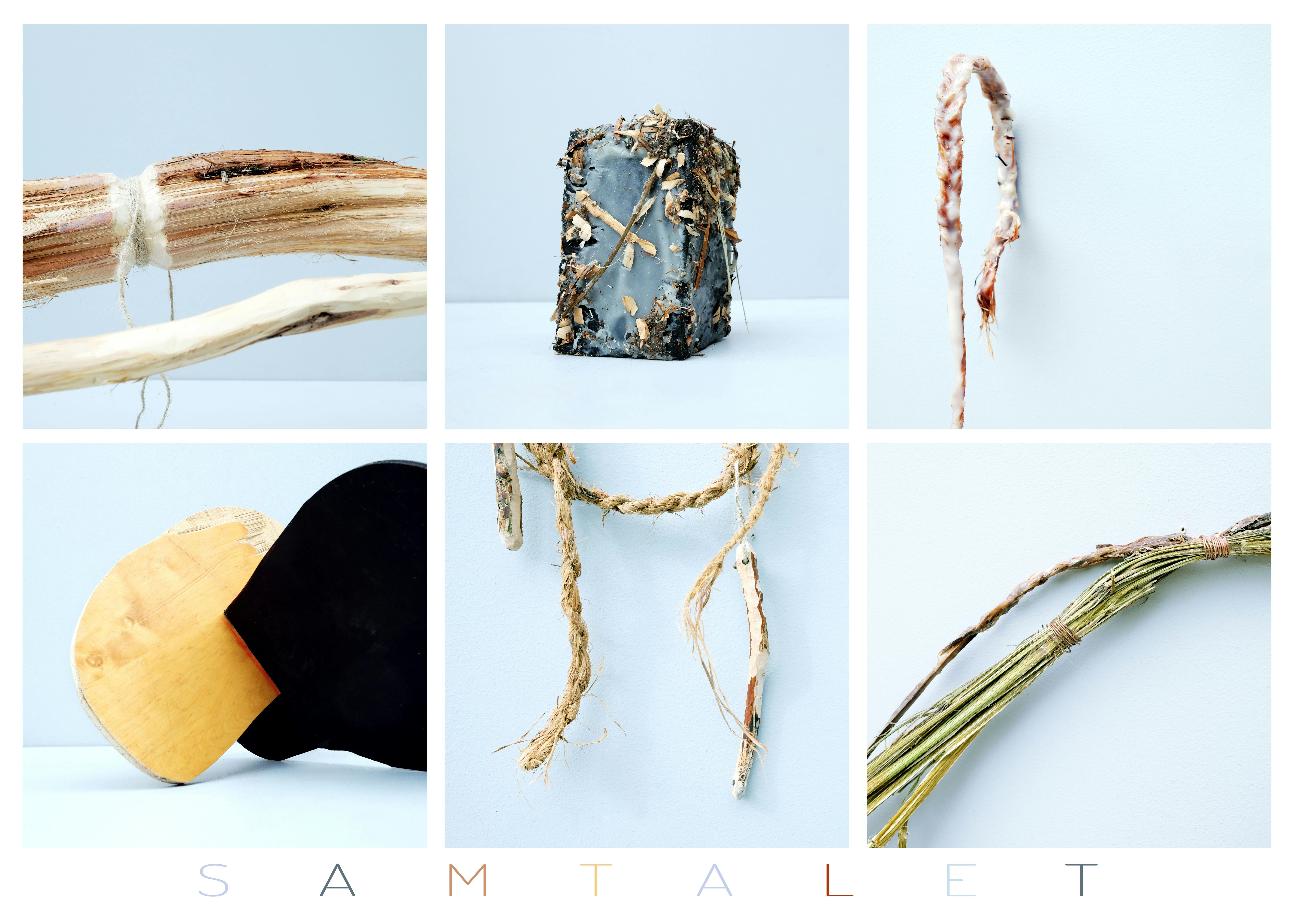
After our days together we went our separate ways, to our separate projects and everyday lives. But we also took on another step in our conversation: we decided to keep a small correspondence, to send letters and materials to each other through mail. One letter from each of us, to each of us. Some words, something small. And we'd keep on crafting with that and see where it took us. See where the materials got us from there. The result became small, poestical objects where the common conversation can be seen as a clear reference, yet where the language of the individual also is clearly visible.





We exhibited the project at Galleri Flygeln in Huddinge in the beginning of October, and as part of Stockholm Craft Week. The objects were then separated from us but they still carried their playfulness, their capacities to cross borders and their joy to the visitors, who expressed that joy back to us. Visitors who also found inspiration when we told of our process and the playful methods. They told us their stories about the times they had been swept away by creativity and flow, and we were happy to keep having these conversations outside of the process as well.





SAMTALET is ongoing. That's why it's exciting. In some ways, our job as artists is to be open to emotional impulses, to reflect on them and pass them on. Tell stories. We converse with the inner world and the outer contexts. At the same time, as craftists, we also converse with materials. Our skill is to bend them according to our will, but also to listen and receive the wisdom in the materials. The wisdom of the body. SAMTALET gets multi-layered; the conversation goes on within ourselves, amongst us, with the materials and with the surrounding world. It goes on, reaches no goals but milestones. Some things get more clear. Others turn into new questions.



SAMTALET consists of:
